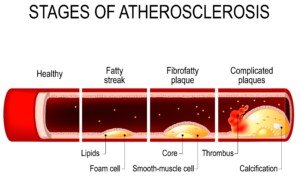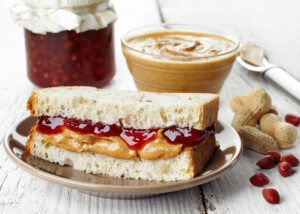While gun control dominates the news, thousands of Americans every year die at the hands of trans fats in common foods.
Trans fats should be banned. Where is the outcry?
Trans fats are a poisonous additive that the FDA allows into the American food supply.
It’s not as easy as “Just avoid eating anything with trans fats” when a loved-one with poor heart health doesn’t care.
Or, to put it another way, many people, even those who’ve undergone bypass surgery for clogged coronary arteries, still aren’t convinced that trans fats are poisonous to the heart.
They’re not convinced because putting trans fats in foods is legal.
How many Americans die every year at the hands of trans fats?
“According to the CDC, reducing trans fat consumption could prevent 10,000-20,000 heart attacks and 3,000-7,000 coronary heart disease related deaths each year,” says Alison Massey MS, RD, LDN, registered dietitian and certified diabetes educator with over 10 years of experience in various community and clinical settings.
“These numbers were calculated from FDA data assuming that individuals consumed 1.3 grams from trans fats” daily, adds Massey.
What’s 1.3 grams?
That’s more than many people think. The amount of this toxic substance can easily exceed 1.3 grams a day because it’s in so many food items, including seasonings, and including items with a container that says “Zero trans fats per serving.”
The FDA allows food makers to label a product as “Zero trans fats” or “No trans fats” – “per serving” – as long as the designated “serving size” equates to less than half a gram of this toxin.
However, the “serving size” is usually ridiculously small; the consumer ends up eating multiple servings.
This can occur several times in one day with different food items, easily exceeding 1.3 grams!
Quite frankly, it’s just as insane for a person with heart disease to consume any amount of trans fats as it is for a person with emphysema to smoke.
Why are trans fats harmful to the heart?
“Trans fats elevate the bad LDL cholesterol and lower the good HDL cholesterol levels,” says Massey.
“When LDL levels are elevated, over time they can promote atherosclerosis.” This means plaque buildup in the arteries.

Shutterstock/Designua
Massey continues: “Additionally, some research suggests that trans fat may increase lipoprotein(a), a type of LDL cholesterol, making them small and denser particles that promote buildup of plaque. Trans fat may also increase inflammation, which may play a role in the formation of blockages.”
Insanity
Ever shake your head when you hear about a person who continues smoking after being diagnosed with lung cancer, or who continues drinking after being diagnosed with liver disease?
It’s easier to give up trans fatty foods once a person is diagnosed with heart disease, because there’s no such thing as a chemical or mental addiction to trans fats!
Yet people with severe heart disease, even those who’ve had bypass surgery, continue ingesting this dangerous, unnatural substance.
“I encourage patients to eliminate all trans fat from their diets,” says Massey. “We discuss the fact that even ‘a little’ is not ideal.”
Why are trans fats so prevalent in processed foods?
“There are two types of trans fat: those that are in food naturally, produced in the gut of grazing animals, and those that are formed during food processing, when hydrogen is added to vegetable oil,” explains Massey.
“Trans fat is found in some processed foods because they extend the shelf-life and flavor stability of the product as well as improving texture or ‘mouth-feel’ for certain food items.”
This doesn’t mean that foods without trans fats are inferior in taste, freshness, texture or feel. Many foods that are free of this harmful chemical are absolutely delicious!
How can you tell a food has trans fat?
First of all, never assume something doesn’t have this poison just because the product is promoted as healthy or boasts high fiber or some other nutrient.
There’s only one way to know if a product contains this poison: the ingredients list.
- If you see the words partially hydrogenated in the list, don’t buy the product.
- If you see just hydrogenated, don’t by the product, because hydrogenated alone can mean partially.
- If it says completely or fully hydrogenated, it does not contain trans fats.
- If you see shortening, don’t buy the item, since the shortening may be partially hydrogenated.
- Avoid foods with canola oil; this oil contains trans fats and is not the health-giving oil that it’s been marketed as.
- Finally, avoid foots that contain interestified fats or say interestification in the ingredients list. Though this isn’t a trans fat, it’s just as bad.
To those who balk at reading ingredients lists, since when should this not be a part of smart shopping?
How crushing can your schedule be that you can’t take five minutes to sift through the different brands of stuffing mixes, noodle mixes or snack bars to see which ones contain trans fats?
People will spend more time channel surfing to see which reality show they should watch while eating meals containing trans fats.
Once you know which brands contain this deadly poison, you’ll no longer need to read ingredients lists.
And it’s a given that the bakery section of a conventional food store is Trans Fats Alley.
You don’t have to be faced with the drudgery of figuring out if you’re on track for exceeding 1.3 grams of this poison on a given day; simply avoid trans fats altogether!
Alison Massey has been working in the field of nutrition since 2010 helping individuals make sustainable changes to improve their health.
 Lorra Garrick has been covering medical, fitness and cybersecurity topics for many years, having written thousands of articles for print magazines and websites, including as a ghostwriter. She’s also a former ACE-certified personal trainer.
Lorra Garrick has been covering medical, fitness and cybersecurity topics for many years, having written thousands of articles for print magazines and websites, including as a ghostwriter. She’s also a former ACE-certified personal trainer.
.










































